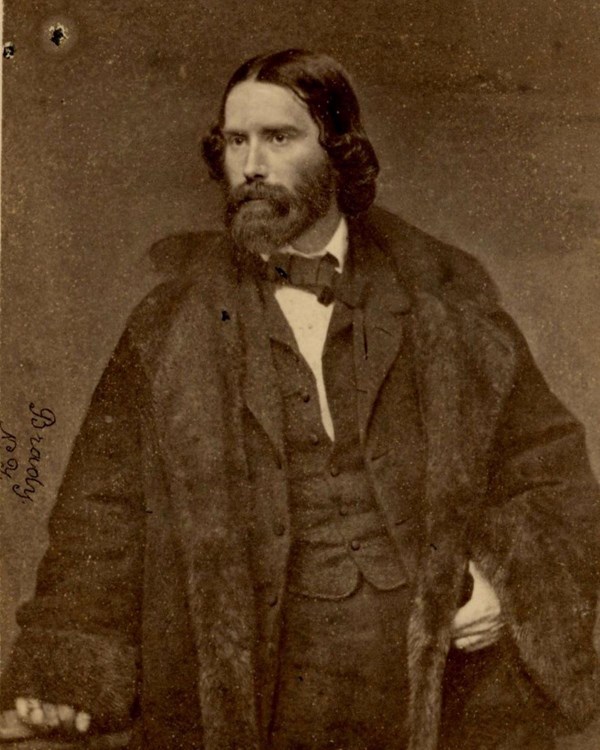Last updated: June 25, 2021
Person
James Russell Lowell

H.W.L. Dana Papers, Longfellow House-Washington's Headquarters NHS
Born at his family home, called Elmwood, and attending Harvard College and Harvard Law School, Lowell had deep ties to Cambridge, MA. In 1855 Lowell succeeded his friend Henry Wadsworth Longfellow as Professor of Modern Languages at Harvard University, and in 1857 he was the first editor of the Atlantic Monthly magazine. Later in life he served as American Minister to Spain and Great Britain.
Lowell wrote many articles and poems upholding the principles of abolitionism. His poems may have been inspired by his wife, Maria White Lowell, who strongly opposed slavery as well. In 1845 he became a regular editorial writer for the Pennsylvania Freeman, a fortnightly journal devoted to the anti-slavery cause. In spring of 1848 he agreed to contribute either a poem or a prose article each week to the National Anti-Slavery Standard of New York.
“Mr. Lowell is one of the most rabid of the Abolition fanatics; and no Southerner who does not wish to be insulted, and at the same time revolted by a bigotry the most obstinately blind and deaf, should ever touch a volume by this author,” wrote Edgar Allan Poe in his 1848 review of Lowell’s The Biglow Papers.
His poem called “The Present Crisis,” written in 1844, called on readers to take a stand against slavery:
When a deed is done for Freedom, through the broad earth's aching breast
Runs a thrill of joy prophetic, trembling on from east to west,
And the slave, where'er he cowers, feels the soul within him climb
To the awful verge of manhood, as the energy sublime
Of a century bursts full-blossomed on the thorny stem of Time.
The poem provided inspiration at the time and for years to come: in 1910, the leaders of the National Association for the Advancement of Colored People chose to call their new publication “The Crisis” after Lowell’s poem.
